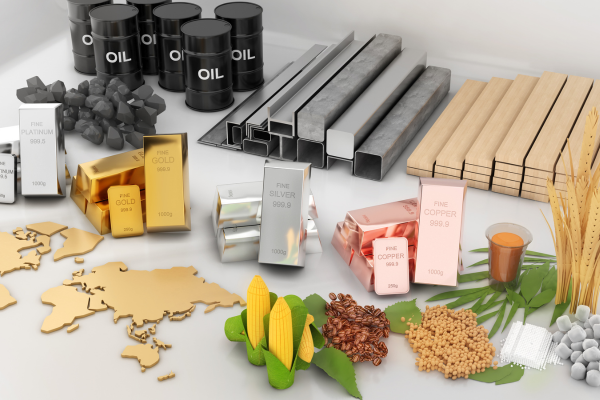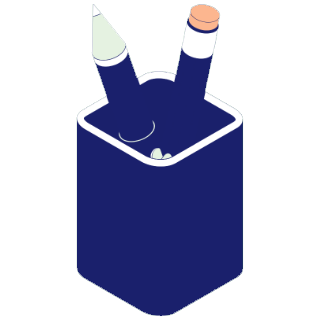How Commodity Trading Works
Published: May 31, 2024

Commodity trading is among the most lucrative investments in the financial market. But with great power comes great responsibility. Participating in the commodity market is much more complex than trading other financial assets like forex.
This lesson explains how commodity trading works, the different types of commodity trading, and its primary market movers in greater detail.
Lesson Highlights
- Commodity trading involves buying and selling precious metals (gold, silver), agricultural commodities (wheat, corn), and energy commodities (oil, coal).
- To participate in commodity trading, a trader can trade on the spot or in derivatives markets.
- Spot trading involves buying and selling commodities on the spot to take advantage of their current price. Meanwhile, derivatives trading involves a futures contract that signifies the trader's ownership of the underlying commodity.
Derivatives Trading: Buying and Selling of Commodity in Contracts
When we talk about online commodity trading, we're referring to the event of trading gold, oil, and other commodities as derivatives.Derivatives? It's a financial contract where you agree to buy or sell a commodity at its future price. The value of a derivative commodity is solely dependent on its futures market performance.
When you're trading commodities on derivatives, you speculate on the future price of a certain commodity market, essentially betting on its potential market movement. If you expect the market to appreciate, you enter a buy or long position. However, if you anticipate it to depreciate, you open a sell or short position.
How Commodity Futures Trading Works?
Again, futures trading involves an agreement between both parties of the trade (the buyer and the seller). This agreement comes with an expiration date and is solely based on the future price of the asset or commodity.Still confused? Look at how JR trades commodity futures.
JR agrees to a commodity 30-day futures contract where he bought 10,000 ounces of silver for USD 40 each ounce. Since he's trading futures, he wouldn't own these ounces of silver in its physical form; instead, he'll have a contract signifying his ownership for this commodity.
Before or on the 30th day of his trade, he must sell these ounces of silver to the spot market, essentially placing a counter trade for his long position. If the silver market rises to USD 45 for each ounce, JR will run at a profit of USD 5 for each ounce of silver he owns. If the market depreciates to USD 35, his position will generate a loss of USD 5 for every ounce of silver he sells.
Aside from your trade profit brought by the fluctuating market, you'll also get futures trading commissions from your broker every time you open or close a trade position.

Spot Trading: Buying and Owning the Actual Commodity
Okay, let's take a moment to review Mr. Walter's history lesson.Commodity exchange is and will always be fundamental to the growth of our civilization. This method of exchange is deeply knotted to world's history as trading has ancient people practice this back in the first century, from merchant to citizens, merchants to merchants, and empires to empires.
This type of exchange is called spot trading, where you buy and sell commodities on the cash market and expect them to be delivered to both parties on the spot. In other words, you spot trade to immediately buy or sell the goods to take advantage of the current or spot price.
Today, the most common commodities traded in the spot market are the following:
| Precious Metals | Gold Silver Palladium Platinum |
| Agricultural Commodities | Wheat Corn Soya Beans |
| Energy Commodities | Crude Oil Electricity Coil |
What Moves the Commodity Market
Like any financial market, profiting from the commodity market mostly relies on the speculation of its market movement. If you were able to anticipate the future market direction and place your trade according to it, you're likely to run at a profit.Here are the common commodity market movers you must watch out for if you want to position your commodity trade to the market properly.
- USD Fluctuation: Most commodities are priced in USD; hence changes in the value of dollars greatly affect the commodity market.
- Global Economic Condition: The overall health of the global economy affects commodity markets. This includes the economic performance of major producing and consuming countries.
- Geopolitical Events: Political unrest, wars, and international alliances are significant to the commodity market movement, especially in countries where commodities are produced.
- Climatological Events: Any climate conditions that may disrupt the production of a commodity are influential to its market volatility because of the scarcity of supply.
- Supply and Demand: This economic factor is a major commodity market mover. When demand is high due to scarcity of supply, the market rises. Conversely, a dried-up demand and high supply lead to market value depreciation.
By properly monitoring these market movers, you can better anticipate the future market price of a certain commodity and potentially profit from it.
Commodities Lesson Outline

